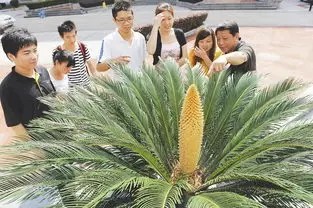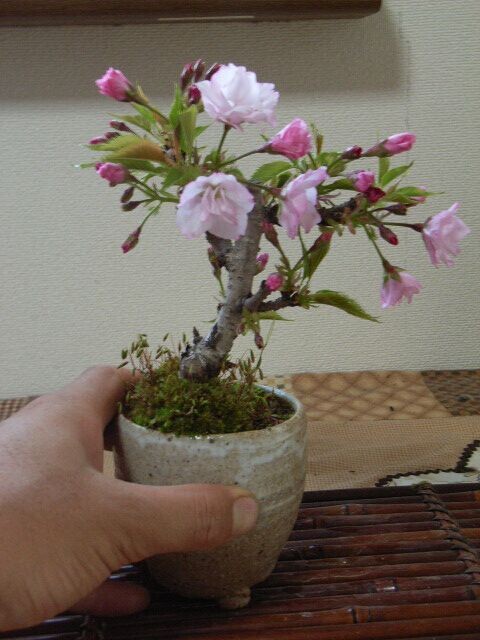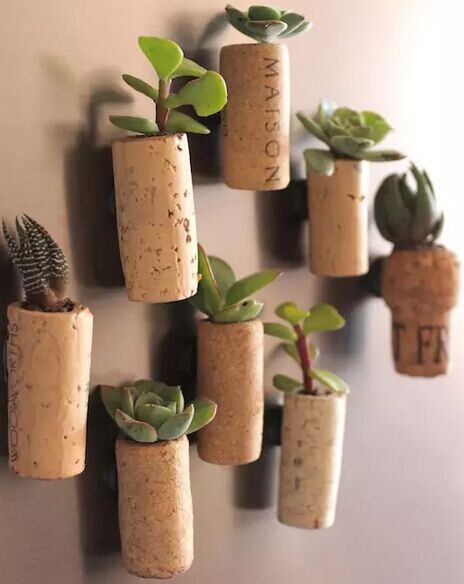Production of cycad bonsai
Cycads are also called iron trees and Phoenix-tailed bananas. Cycads are widely used in folk "iron trees". One is because of its high wood density, which sinks into the water, and is as heavy as iron; the other is that it needs a lot of iron for its growth, even if it is a decaying cycad, as long as it is nailed into its trunk, it can be brought back to life and repeated vitality.

The iron tree mainly grows in Asia and originates in the south of China and India. The cultivation and growth of iron trees like a warm and humid environment, not resistant to cold, but shady, with a life span of about 200 years. And the iron tree growth process, will be more sensitive to iron deficiency, so in the iron tree culture, should be appropriate to add iron filings to the culture basin soil.
1. Draw materials
Cycads are usually propagated by sowing, dividing fruits, burying and so on. The sowing method is suitable for sowing without picking in autumn, or sowing again in the spring of the following year. When sowing in the open field in the south, the seedbed soil should use sandy soil with loose fertile and good drainage, sparse on demand, and covered with fine soil, which is easy to germinate under the condition of moist and high temperature. Attention should be paid to strengthening the management at the seedling stage, watering should be appropriate and should not be too wet, which is easy to cause root rot and can be transplanted after 2-3 years of cultivation. The sprouting buds are cut from the roots of the old cycads for culture. if the buds are not easy to sprout leaves, you can buckle a flowerpot upside down to block the light and promote leaves. After the new leaves are issued, remove the covered flowerpot, build a shed to shade, and gradually increase the light. When cycads are cultivated in colder areas of the Yangtze River basin, their stems should be wrapped in rice straw and heat preservation measures should be taken in winter. Under the condition of no greenhouse, this method should be adopted.
2. Upper basin
① selection basin: cycad is an evergreen foliage tree species, it is appropriate to use purple sand pottery basin or glazed pottery basin, the color should be dark purple, light green, light yellow. The basin shape is oval or rectangular, and a single plant can also use a shallow round basin or hexagonal basin.
② soil: cultivate cycad basin soil, and it is better to use sandy loam with loose fertility, good drainage, acid or micro *. Family potted soil can be cultivated with humus soil or 70% weathered pond soil mixed with 20% sandy soil and 10% to 20% cake fertilizer.
③ planting: cycads are warm-loving plants, and transplanting should be carried out in April in spring. When planting, cover the bottom of the pot with a layer of broken tiles and coarse sand to facilitate water penetration, and then put rotten cake fertilizer or organic fertilizer as base fertilizer. If several plants are co-planted, the pot should be combined with the shape, set the planting location and angle, so that the size, height and height vary.
3. Modeling
Cycads make bonsai, its block or cylindrical stem can not be processed, the key lies in the selection of materials, with multi-head, stem Weir lying creeping, vertical and horizontal oblique, natural posture strange and strange materials to decorate bonsai is better. You can also choose several cycad plants of different size and height, which are cleverly arranged in the basin to form a cluster-type bonsai with a unique flavor. Its overdense large feathered leaves or leaves that affect beauty can be trimmed properly. It is better to tilt or recumbent in the shape of cycads bonsai, which is not suitable for single plant upright planting. When two plants are planted in one pot, we should choose one big and one small, one positive and one oblique, and take the potential of each other for configuration. Can also be planted in multiple plants, there should be primary and secondary, density, song positive changes, so as to have a certain ornamental effect.
Cycad has certain particularity in cultivation management and bonsai production, such as improper management and poor production, which can easily lead to the decline of its ornamental value. therefore, there are higher requirements for daily watering, fertilization, prevention and control of diseases and insect pests, heat preservation and anti-freezing, sunshade, plastic surgery, basin change and bonsai material cultivation and production of cycads.
Time: 2019-05-26 Click:
- Prev

The method of making Wisteria bonsai
Wisteria is a kind of deciduous climbing and winding large vine, which is wound on the flower rack with wisteria. Whenever the flowers bloom, the branches fall, and purple clusters of inflorescences hang between them, forming a romantic and beautiful landscape. Because wisteria has a long life, it is a long-lived tree species, which is very popular in folk planting, and the stem of adult wisteria is elongated and buckled.
- Next

DIY hand-made wine cork plant bonsai
These cork succulent plant bonsai are very lovely, pocket and exquisite, on the cork glued to the magnet can also be made into refrigerator stickers, is not very creative? Put them on and your kitchen will be different from now on! The manual method is as follows: TIPS: generally speaking
Related
- Fuxing push coffee new agricultural production and marketing class: lack of small-scale processing plants
- Jujube rice field leisure farm deep ploughing Yilan for five years to create a space for organic food and play
- Nongyu Farm-A trial of organic papaya for brave women with advanced technology
- Four points for attention in the prevention and control of diseases and insect pests of edible fungi
- How to add nutrient solution to Edible Fungi
- Is there any good way to control edible fungus mites?
- Open Inoculation Technology of Edible Fungi
- Is there any clever way to use fertilizer for edible fungus in winter?
- What agents are used to kill the pathogens of edible fungi in the mushroom shed?
- Rapid drying of Edible Fungi

